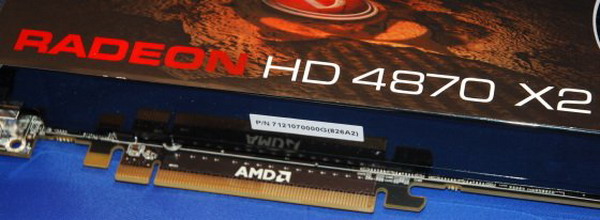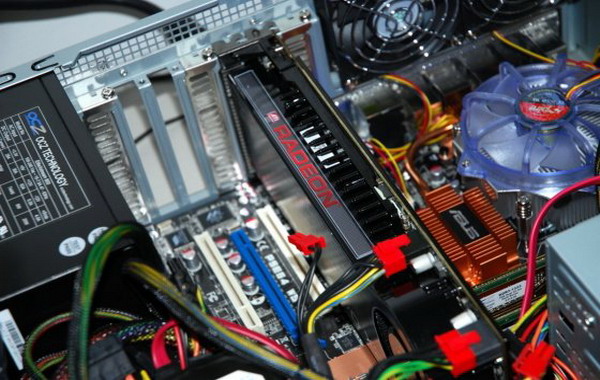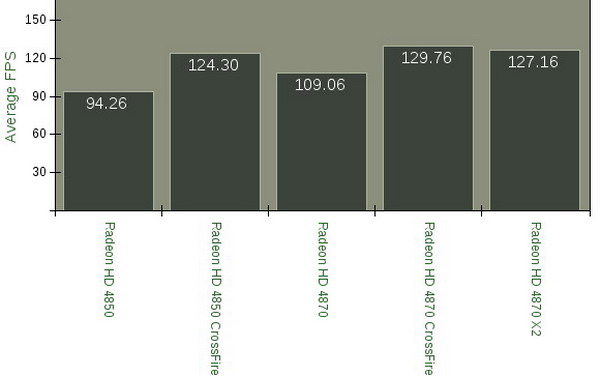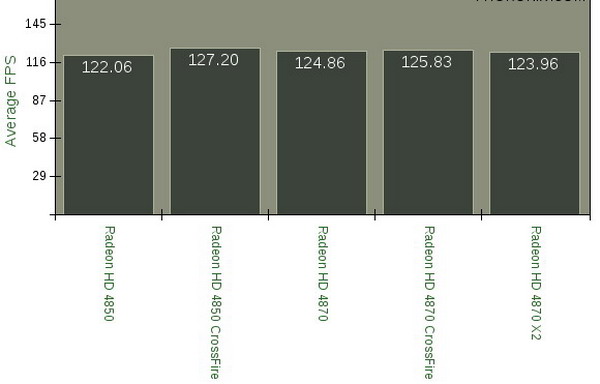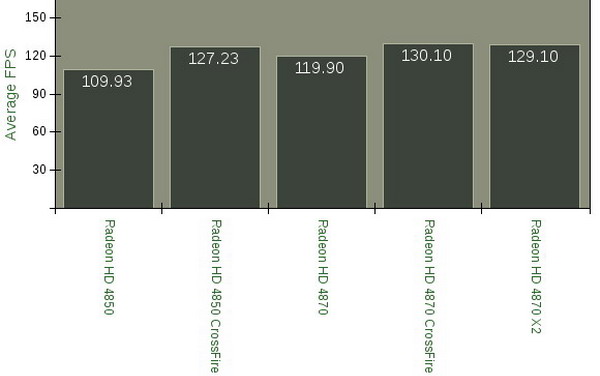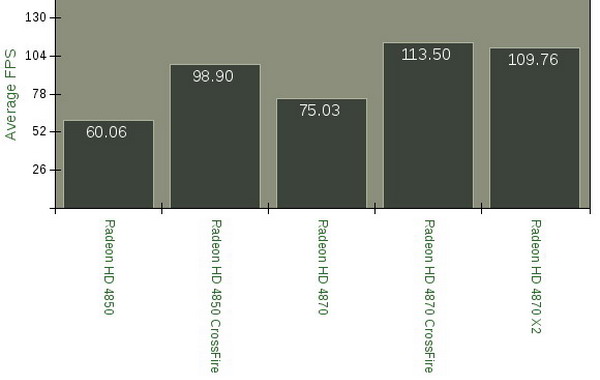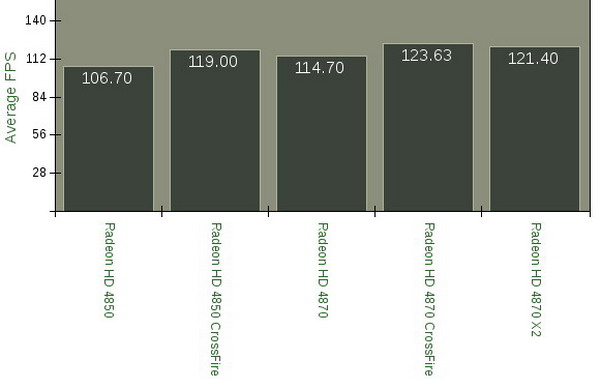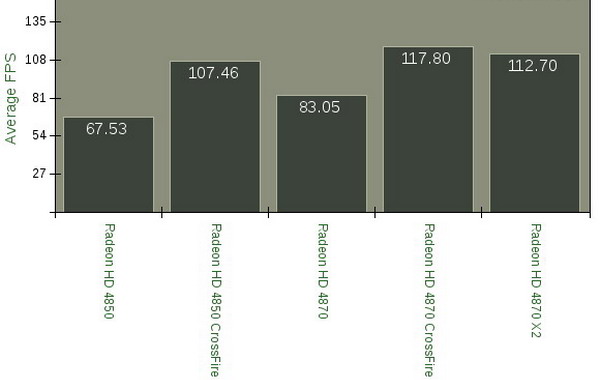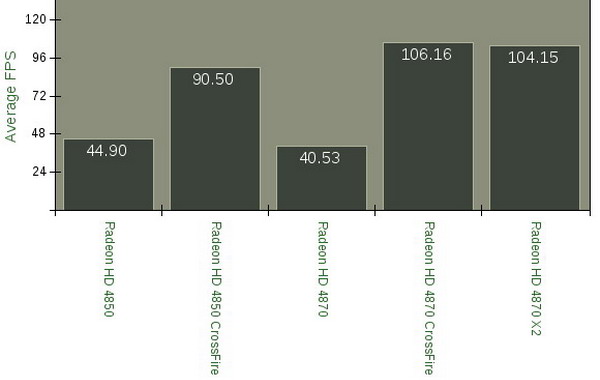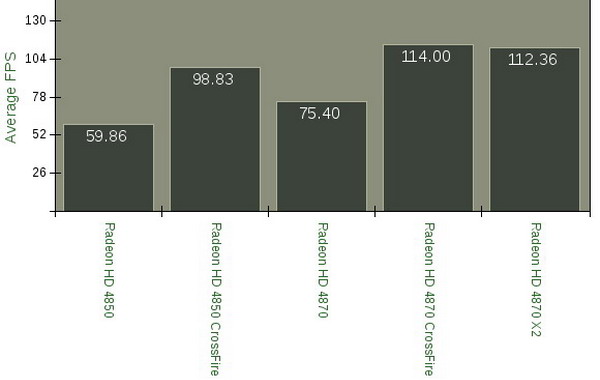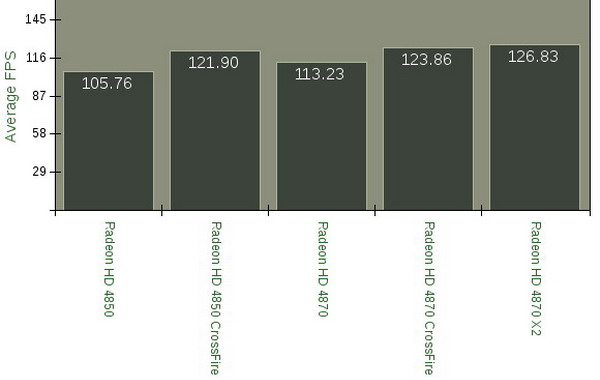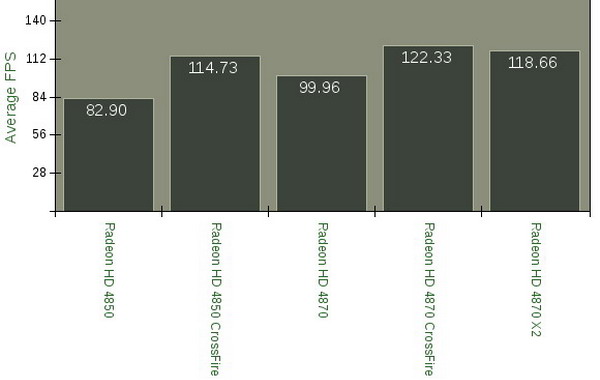Introduction
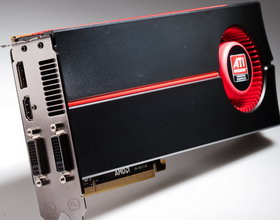 To my surprise and chagrin, my first grope of an HD 4870 X2 was perilous. I came away from it a better person, maybe stronger, but scarred. I was uncertain about reencountering the double-edged machine, and rightfully so. It’s dangerous. An HD 4870 X2 consumes a commensurate amount of power and can withstand tremendous heat, but in the right, trained hands, it is absolutely a force. Forged of the blackest PCB, this VisionTek HD 4870 X2 is capable of bringing the fiercest games to reckoning.
To my surprise and chagrin, my first grope of an HD 4870 X2 was perilous. I came away from it a better person, maybe stronger, but scarred. I was uncertain about reencountering the double-edged machine, and rightfully so. It’s dangerous. An HD 4870 X2 consumes a commensurate amount of power and can withstand tremendous heat, but in the right, trained hands, it is absolutely a force. Forged of the blackest PCB, this VisionTek HD 4870 X2 is capable of bringing the fiercest games to reckoning.
And only after being bested by it could I ever hope to wield it’s… Oh screw it, it’s just a video card. I mean, it’s one of the best video cards and all, and definitely not for everybody. Actually, as you’ll see, it’s not really intended for mainstream gaming. You need a damn big display to really see this card make frames. If you’re looking to spend serious dollars for the best gaming experience, you’re set. If you want a video card that will no doubt last years, here you go. But if you’re reading this on anything less than a 24-inch display, an HD 4870 X2 is probably overkill.
The Card & Bundle
Once you go black, baby. It’s good to see that ATI is willing to use the fastest color in the PCB spectrum. (Black is up to 14% faster than identical hardware using green PCB, you see.) Really, ATI didn’t have much choice in the palette-swap, since color is the only thing differentiating the 4870 X2 from the 3870 X2. Otherwise, they’re the same card on the outside.
There are two CF tabs at the top for CrossFire and CFX, and the 6-pin and 8-pin power connectors point up from the face of the card–considerate because of the card’s length. If the power connectors pointed out from the front, it could prevent the card’s fitting it some cases, being that the card is 10.5" long.
The bundle is on the austere side, but if you’re buying a $400+ video card, you’re probably not interested in a non-Enhanced Edition of The Witcher. Wait, no I take it back, they just didn’t give me all the stuff: on top of the D-Sub adapter, an HDMI adapter, two power cable adapters, one composite and one component video adapter, a CrossFire bridge, a manual, and a driver disk, the retail version comes with a Prince of Persia game (The Two Thrones) a copy of Guild Wars (I can’t tell from the photo which expansion) and Ruby ROM, a collection of ATI utilities. Actually, as far as bundles go, that’s not half bad.
Specifications and Setup
In this review, we’ll be comparing the VisionTek Radeon HD 4870 X2 to:
- A Sapphire Radeon HD 3870 X2
- A Diamond Radeon HD 4870 512MB
- A ZOTAC GeForce GTX 280 1GB AMP
- A PowerColor Radeon HD 4850 512MB
- A ZOTAC GeForce 9800 GT 512MB AMP
Test Computer Specifications
- Intel Core 2 Duo E8400 3GHz
- Asus Rampage Formula (Sponsored by Asus)
- 2GB Crucial Ballistix Tracer DDR2 800 @ 4-4-4-12 (Sponsored by Crucial)
- Thermaltake Toughpower 1000 (Sponsored by Thermaltake)
- Windows Vista Ultimate x64 (Sponsored by Microsoft)
DirectX 10 Titles
Performance Notes
Crysis-wise, the card is unbeaten, and with Company of Heroes, it’s not doing too shabby, either, but when playing Unreal Tournament 3, the dual-GPU 4870 X2 doesn’t do nearly as well as either the GTX 280 or 260. The Unreal Engine is pretty ubiquitous, so this is something that’s hopefully just a driver deal, but at this point in the optimizations, is probably indicative of the extra CPU burden of CrossFire affecting the performance.
While the beta drivers had some stuttering problems (or non-stuttering, but problems nonetheless) playing Company of Heroes, here there are clearly none with retail drivers.
DX9, OpenGL, and Synthetics
Performance Notes
Here again, the 4870 X2 pretty much ties with a 280. These DX9 titles are practically lightweight, so the limit isn’t with the GPU, but rather the CPU and everything else. At this point, things are pretty clear: performance gains are nil without adding extreme levels of anti-aliasing or upping the resolution. Which I guess, is a good thing.
Video, Power, and Overclocking
The card delivers great HD 4000 video playback, with barely noticeable moire after skipping chapters of a DVD. Normal playback is perfect.
My initial power metering was clearly affected by bad drivers, and not running both cores correctly or at all: this means that the card uses a whole lot of power. Two-hundred fifteen watts! A new record!. At idle, things are a little better, a mere 16W over, ah, a hundred watts.
The card is, fortunately, quiet, even under a full load. It can sustain a lot of heat, and the enclosed heatsinks appear to be of better construction than the original, the 3870 X2. Both are copper, and the second heatsink has a conspicuously thick base; I think it houses a vapor-chamber. At idle, the card sits on the high side of 70 degrees. Under load, it’s close to 90. While this may bother people, the hardware doesn’t seem to be affected and it overclocks still.
There is a slight whisper of coil noise, but only when the card runs at full speed and it’s not strong enough to escape a case, and it gets quickly overwhelmed by the relatively quiet fan.
Both GPUs (which can be overclocked independently, if you choose) maxed out in Catalyst Control Center, at 790 CPU/ 990 memory, or 40MHz/ 90MHz over stock, respectively. This isn’t much, but does it really have to be?
Conclusion
The 4870 X2 is a tough nut to crack. It’s likeable just for the fact that it’s awesome. I mean, it’s a real CrossFire-on-a-stick solution, and with retail drivers, works great. It’s also quiet, not silent or anything, but I’d rather have two of these in my computer than a single GTX 280. (I mean, who wouldn’t?) While the GTX 295 is competition, it’s also a whole lot more expensive. Different strokes.
This card did set new records, particularly with power consumption. What’s apparent from these apples-to-apples mainstream benchmarks, is that there’s no reason to go 4870 X2 if you’re not interested in anti-aliasing, and the whole thing is highly resolution-bound. At these modest resolutions (if you think of 1680×1050 as modest) you’re better served by a single HD 4870 or a GTX 260.
If there are such things as micro-stutters, and if they do affect games, they don’t do so tangibly. I’m thoroughly convinced that any glitches I’ve encountered were products of early drivers.
I know a lot of this seems like a downer, what with the card only marginally surpassing other, much cheaper cards, but it really isn’t so. I know this, because I’ve gone and tested it at 1920×1200, and I have this to say: 8xAA? No problem. Let’s do it again, this time with v-sync. Hardware like this deserves an image quality article.
Comparing this X2 to others, it’s priced the same, with some good add-ins as well as VisionTek’s lifetime warranty. That alone pushes it to the top of the list. So if you read all this and are sure you’re in the market for a Radeon HD 4870 X2 is definitely recommended.



